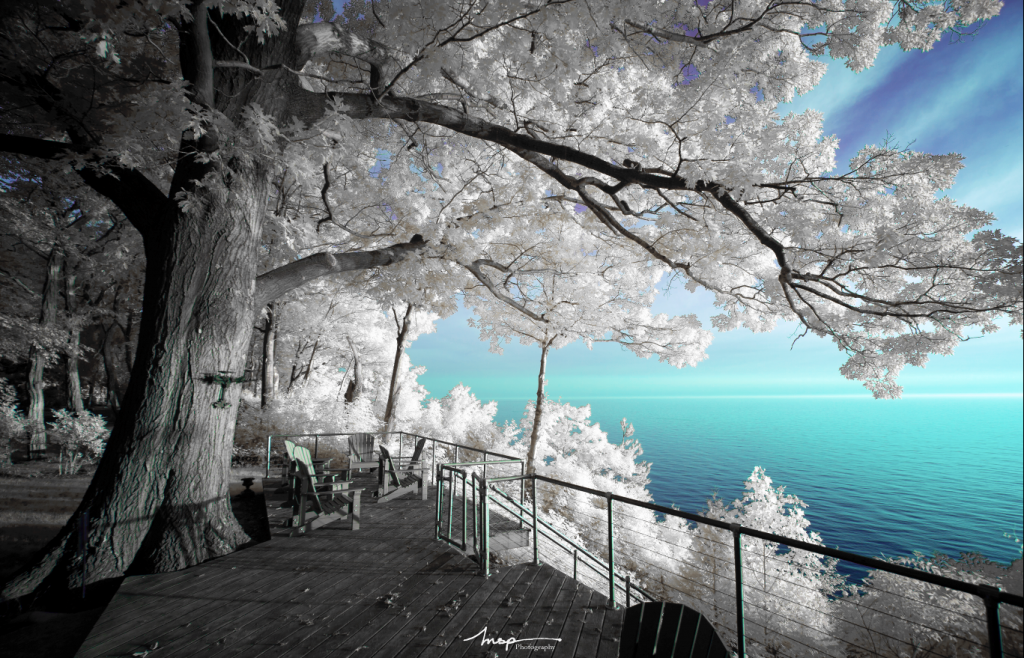The Why & How of Digital Infrared Photography

“Olympus” is a traditional-looking IR photograph. It was shot with a true IR filter which blocks all visible light, letting only IR light pass through to the sensor. People sometimes think that it’s a snowy scene taken (somehow) at night; in fact, it was taken in Maui in the middle of the morning.
Hello! I’m Matthew Stuart Piper, a Board Member of Best of Missouri Hands, and I thought I’d introduce myself by sharing a bit about my art form. I’ll show you some examples and then give a brief explanation of how it works.
The Why!
The magic! Let me admit the obvious at the outset: I’m obsessed with infrared (IR) photography. It’s almost all I’ve shot since 2001. When I began my IR career, I only knew one other IR shooter. In the wake of the digital revolution, shooting IR is easier than ever and the number of hobbyists and specialists seems to be increasing exponentially – as have the number of people who tell me they’ve gotten hooked on IR and have lost some drive for more traditional photography. So why do I love IR? Why do I think you’ll love it too? For me, the reason is this: infrared is the perfect photographic medium for the kind of art I like to make, which I call either “dreamscapes” or “magical realism.” I love the surrealism, and I love the unique hue and tonal possibilities. If you like the idea of creating realistic compositions with a touch of magic, IR is for you! Let’s take a look at a few examples. (I name all my art images, since I sell them as limited editions.)

“Vacationing” is a modern-looking infrared photograph, combining realistic skies with the IR glow of the leaves. It’s probably fair to say that the majority of IR photos are shot and edited to look along these lines today.

“Aspire” shows the strong IR glow as well, but was shot with a red filter, giving the orange and yellow sky and red stones. Although mid afternoon in the summer isn’t normally a good time to take photographs, the extra sunlight (IR radiation) can actually help the IR photographer!

Finally, “Victorian Expedition” is a further example of what can be done in post-processing with color IR photography. To me, rich false color renditions are often even more striking than both true color photography and more conservative color IR photography.
So that’s a tiny taste of why I love IR photography as well as some of the wild and wonderful results that are possible. Before explaining how it works, let me summarize three of the wonderful effects you’ll get shooting IR. First, experiments have shown that healthy hydrated vegetation has a spike in reflectance levels in the IR spectrum, creating an infrared glow that is commonly called the “Wood Effect,” after Robert Wood’s pioneering photography. Second, combining visible and invisible sources of light – as occurs during color infrared photography – allows for hue possibilities that can’t otherwise be generated. Third, IR photography enjoys enhanced contrast because the longer wavelengths are less susceptible to atmospheric light scattering. This unique combination of tonal, hue and contrast possibilities helps explain why infrared is so captivating and such a wonderful creative outlet. (I have hundreds more images on my website and Instagram (addresses below) if you’d like to see more, including even more radical artwork.)
So how does IR photography work?
The How! To be continued….
Matthew Stuart Piper of Matthew Stuart Piper Photography


